When I walked into the theatre for the first leg of Kojima’s Death Stranding World Tour 2, I honestly didn’t know what to expect. Hideo Kojima is a game designer who needs no introduction. He has helped build some of the biggest franchises in gaming and has been a pioneer in using motion capture to bring major actors into the world of interactive media. Now, he’s taking his latest project on an international tour—its most recent stop in Lucca, Italy, during this year’s Lucca Comics & Games festival—and it all feels fitting. It’s a celebration of creative joy, a new chapter in a monumental career, and a showcase of Kojima’s enduring passion for the art of game design.
Sitting there in the theatre back in June, with Geoff Keighley speaking to Kojima alongside Shiolo Kutsuna, Woodkid, and Troy Baker, the audience got a glimpse into the creative process behind the game and the passion driving it. In that moment, Death Stranding 2 felt like a larger-than-life endeavour—one that took years to bring to players but was fuelled by dedication on all sides of development. The excitement in the room was palpable, with everyone clearly thrilled to share what went into the game. Even after more than 40 years in the industry, no one seemed more excited than Kojima himself.
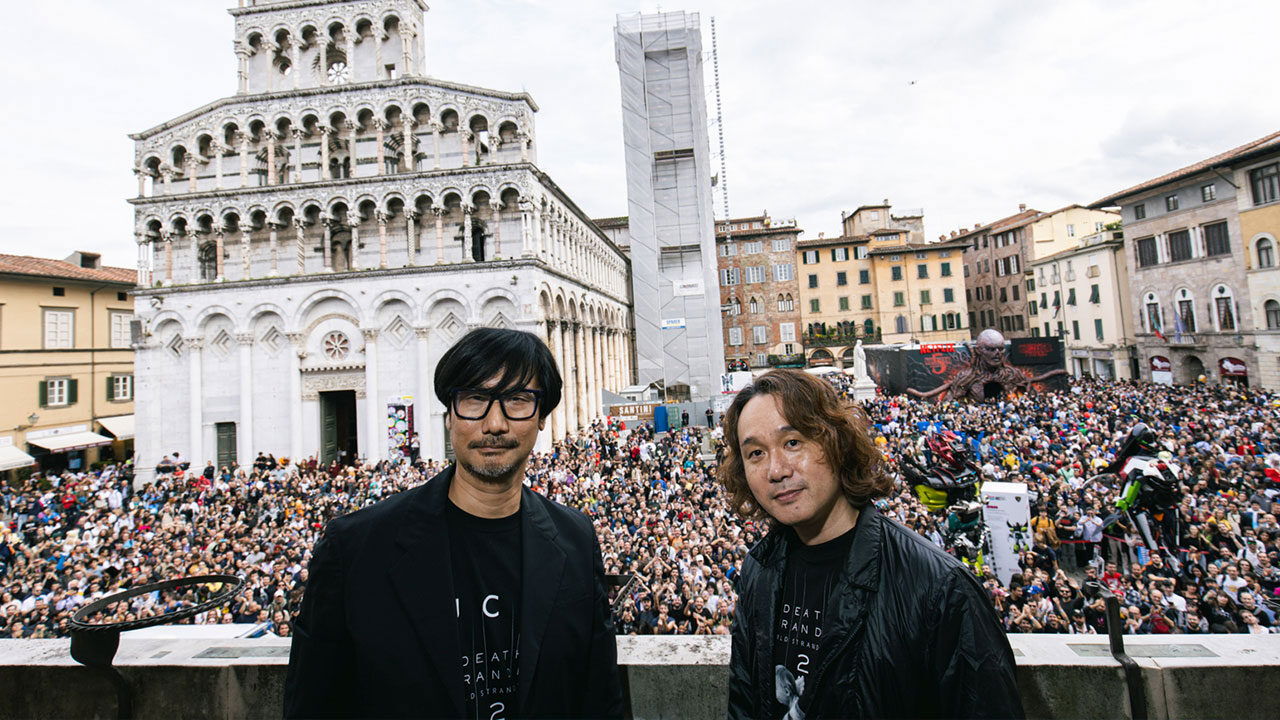
As he said in an exclusive interview with CGMagazine, Kojima explained: “I have nothing that I want to redo. I’ve been doing this for about 40 years. I know I could do better if I reworked the games I made before, but games are a little different. In the past, it was 8-bit or 16-bit, and I don’t want to go back to that. I can now use musicians, actors… So that’s what is so fun about this industry. I think maybe I regret a little bit that I should have become independent a little sooner. I’m a little old now. I have so many things that I want to do. What if I had started earlier? Maybe that’s the only regret.”
He is now an independent game designer, free from the confines of the development structures many major publishers impose on their talent, and able to celebrate the art of game design. This is very much what the Death Stranding World Tour 2 is about—bringing fans behind the scenes in an intimate setting, letting people from around the world look behind the curtain of game development, and shining a light on the many aspects involved in bringing a project like Death Stranding 2 to life and the passion Kojima brings to every stage of development.
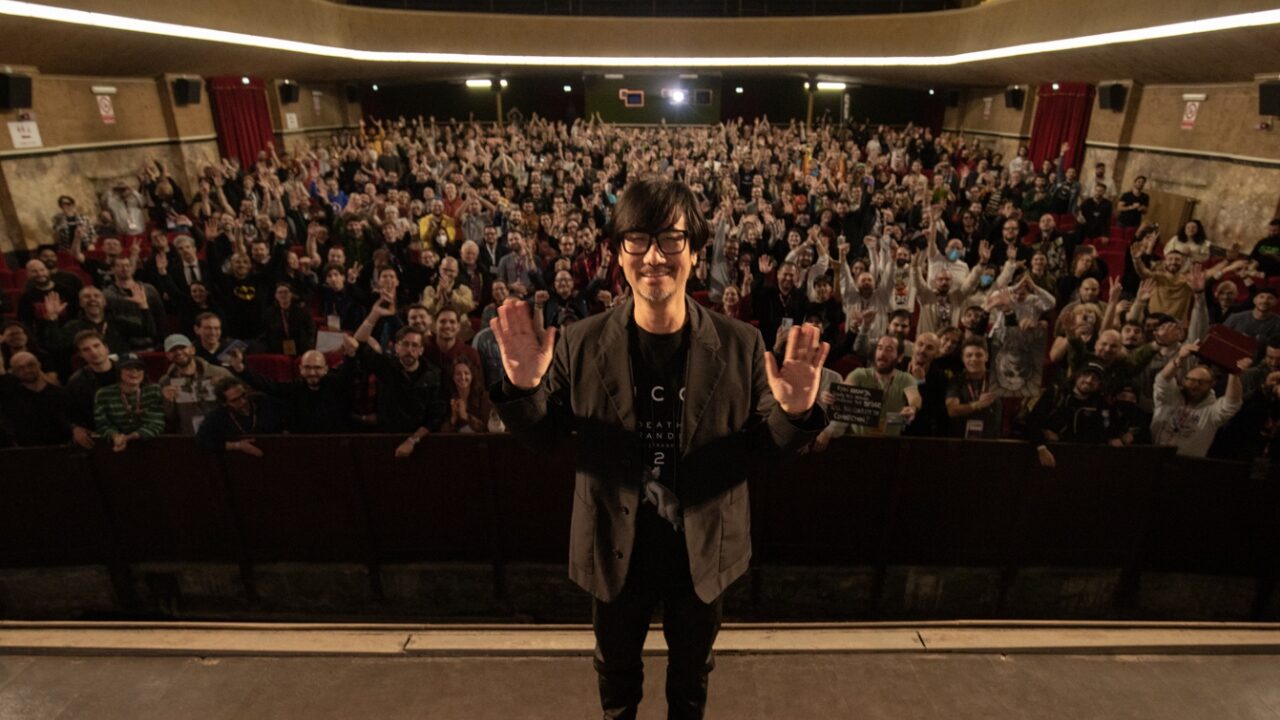
As Kojima detailed while on stage in Lucca, “In my days, when I was young, you had to be in a company because we didn’t have any tools to develop. You couldn’t do everything by yourself, so you had to belong to an organization to create a game. But if you’re in an organization, it means there are rules you have to obey when you create something. You can’t be 100% selfishly creative.”
Hearing Kojima talk about wanting to be part of the process at every stage reflected his genuine excitement about working with actors and making the creative process a true team effort — one that brings his vision to life in an authentic way. Listening to him describe how the scene between Neil and Lucy was developed, his enthusiasm for collaborating with performers was palpable.
“I was thinking, how should I shoot this? How should I make it emotional? I looked at the set and was talking to them, and this is the exciting part — when I talk to them, they give me a lot of ideas, and I construct that at the start.”
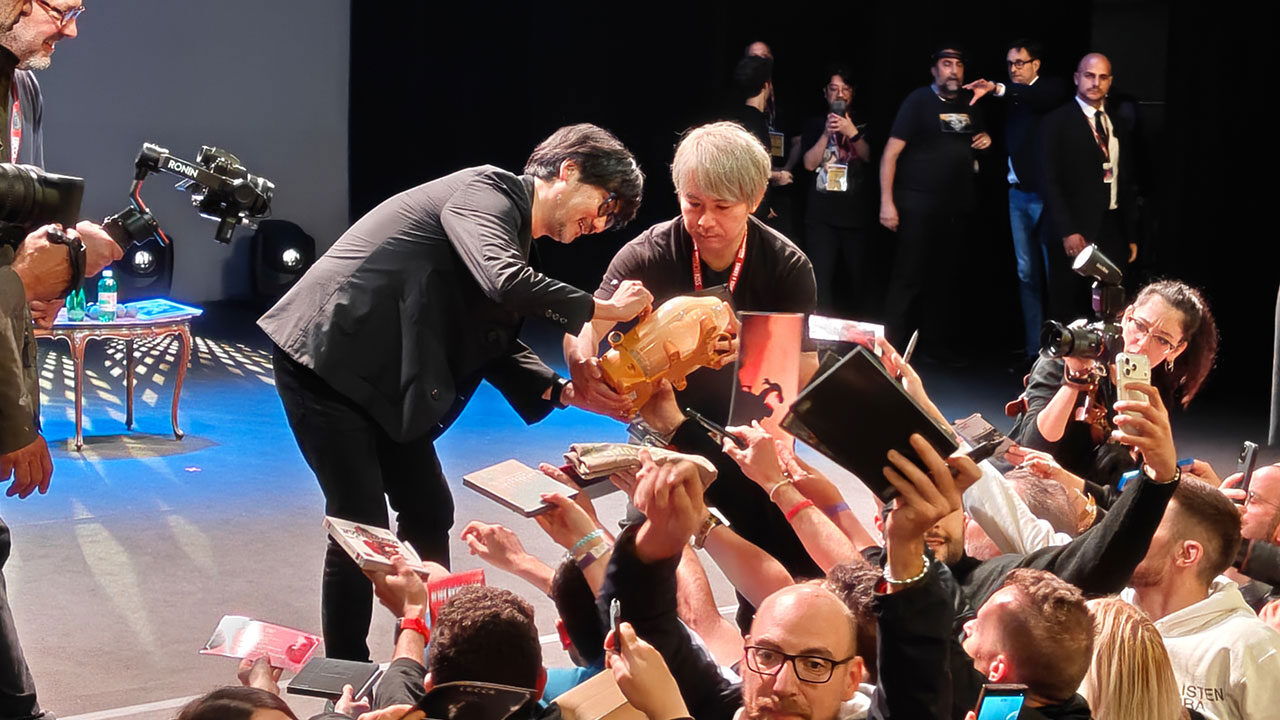
He elaborated further:
“First, Neil comes in and sits down on a different chair. I didn’t tell Luca to do that. Luca actually said, ‘You know, Lucy is a little higher because she’s a counsellor.’ So she said, ‘Don’t sit there.’ And Neil didn’t want to come to the counselling — you can tell just by looking at him. He’s a little nervous, so he tries to put a cigarette in his mouth. That was Luca’s idea. But then Lucy said, ‘No, we’re not smoking.’”
“So now you understand their relationship. I was thinking about this when making the previs, but I can’t make all of this by myself. It’s only possible when they come to the set, and we talk and discuss. This was possible because we did this kind of collaboration. You could never do this if I just created it in CG.”
Over time, a nearly mystical atmosphere has surrounded Kojima’s development work. Yet, hearing him speak, I can’t help but sense a childlike wonder for the art of game design — including all the elements that support it, such as acting, music, art, and everything behind the scenes. Kojima exemplifies a game developer who truly loves what he does and refuses to become jaded by a system that at times seems willing to crush everything in its path to push out the next release or chase a trend.
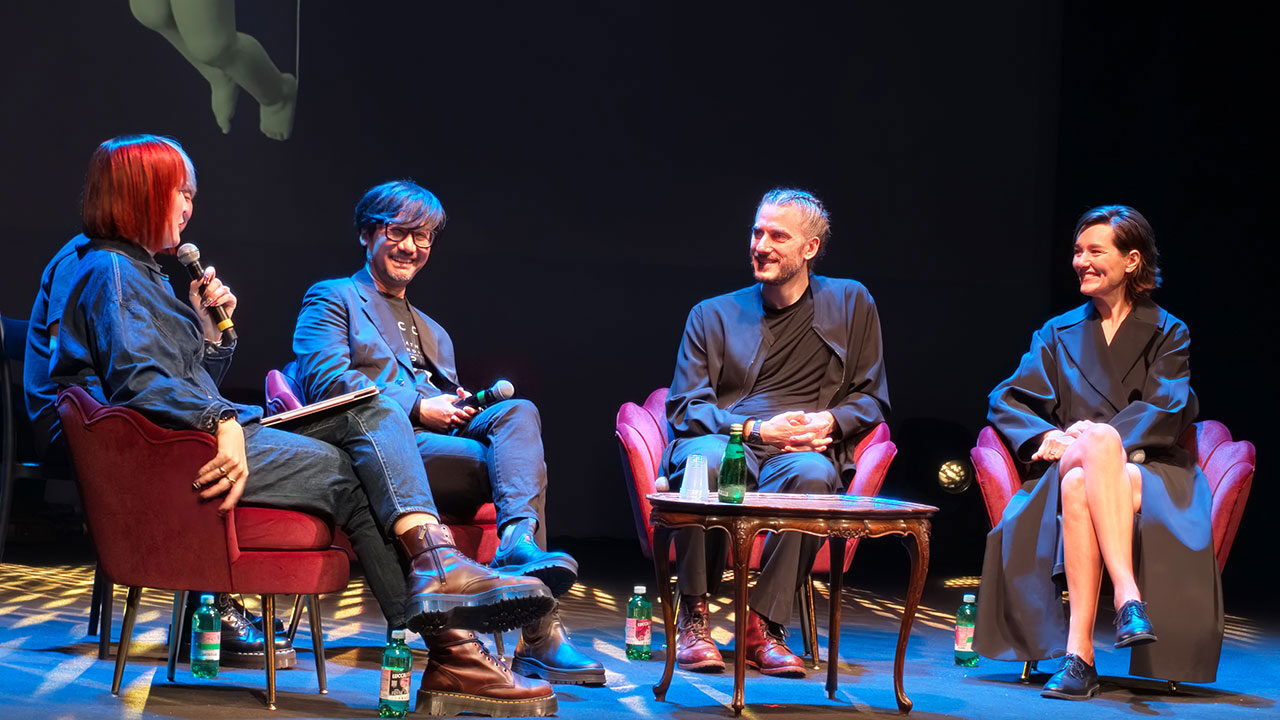
Games are a force of artistic expression, just as much as movies, television, music, and art. While they often require a team of people to bring them into the world, it is the love and excitement of those individuals that make them great. That is what Kojima Productions appears to be doing with its releases. These are stories conceived by Hideo Kojima but brought to life through the hours of work from everyone who believes in that idea and shares in the process to make them something special.
Now, looking back, it makes sense why the Death Stranding World Tour 2 visited the locations it did — important places around the world, starting in Los Angeles and wrapping up in Lucca. At the time, I had thought the Lucca Comics & Games festival had invited Kojima to make the city one of the tour’s stops. But as Lucca Comics & Games general director and “dungeon master”, Emanuele Vietina, explained:
“Of course, we follow dreams. So Kojima was on our bucket list for, I don’t know, the last 10 years. What I wanted to say is that we didn’t get Kojima the way we didn’t get Netflix — by going to them with a deck saying, ‘This is Lucca. Can you come to Lucca?’ You grow up, you become relevant, and then, when you have a strong reason why — so Death Stranding 2 World Tour was a bit of a reason — they decided to come to Lucca.
They got in touch, of course, and they’re strongly connected with Sony PlayStation Europe, which has experienced Lucca for many years. The last time they came was probably 2022 or something like that. So it has been very natural. We were on their bucket list, and they told us, ‘You are relevant, and we are doing a tour. Would you like to be part of our tour?’, Fuck, yes!”
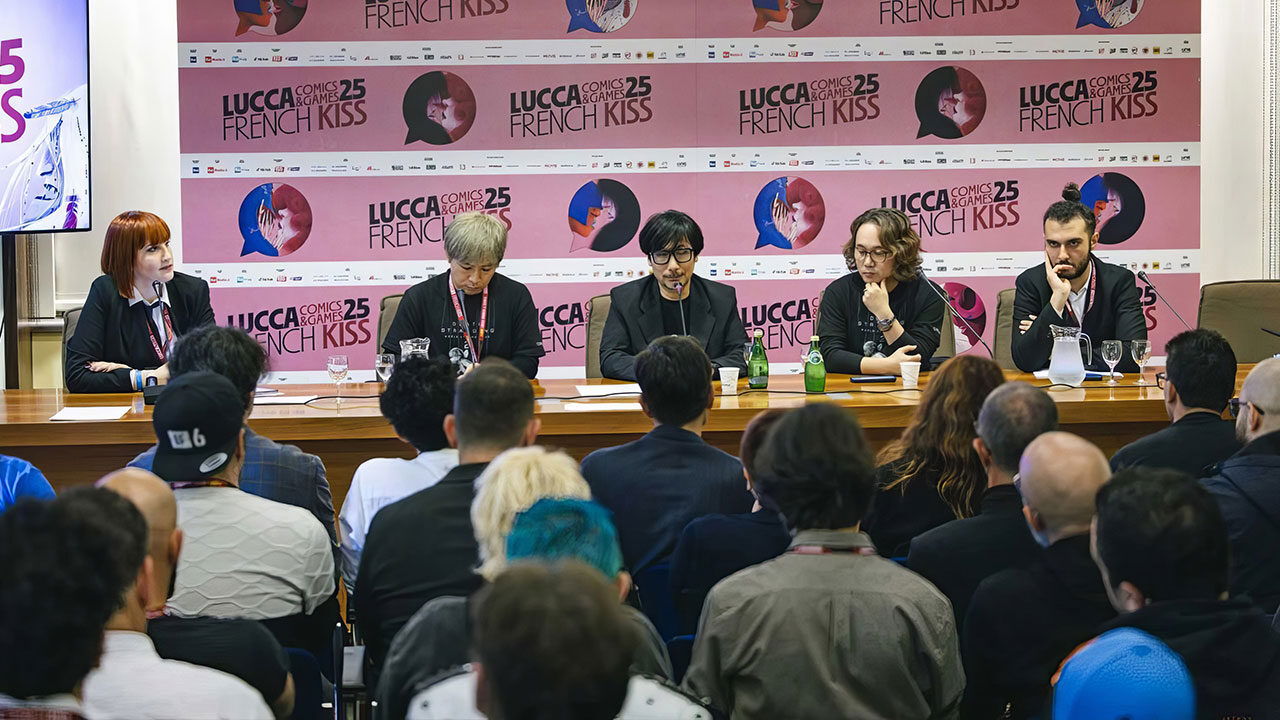
Lucca is a festival that brings together all aspects of nerd culture in one place — a celebration of comics, tabletop games, video games, music, movies, and anime. It unites people from around the world and makes everyone feel welcome. For a game like Death Stranding 2, and a developer like Hideo Kojima, it feels like an event tailor-made for the tour. Attending it, I couldn’t help but be pulled into that world.
Even before walking into the last leg of the tour, as I waited outside while Kojima, Alissa Jung, and Luca Marinelli posed for photos, waved to fans, and prepared to start the event, it felt more like a premiere at TIFF than a talk for a video game. The excitement to hear Kojima speak was closer to what you’d expect from the debut of a major film, yet it all felt perfectly at home on the streets of Lucca — a medieval walled city transformed by a festival devoted to everything geeky.
It is easy to let games fall into the simple view of being nothing more than a product — something to be consumed, released by a faceless mega-corporation, lacking a soul or the human faces behind the $69.99 price tag. But games are so much more. Many people work with passion to bring a vision to life, and it is studios like Kojima Productions and events such as the Death Stranding World Tour 2, that show how deeply people love the work they do and how much they want to share it with the world.
Even sitting in the theatre, watching everyone talk, the audience — myself included — hung on every word, bursting into applause as each new revelation was made during the discussion. Kojima shared personal stories and development details that offered an intimate look inside his mind and process.

While he was the subject of many questions, he made it a mission to talk about his collaborators and highlight the talent not only of those who shared the stage with him but also of everyone who helped make the game and bring the project together into something believable. He also took the time to call on the audience to make the art they believe in, go out and collaborate with their friends, and stop sitting back and only watching from the sidelines.
“When I was a child, I was called a nerd, and gamers were called geeky people. But recently, that has gone away,” Kojima said excitedly. “So be confident that you love games and comics. The art belongs to you now—to you, everyone. So absorb everything you love. And if possible, create something yourself. If you can’t do it by yourself, you can have friends create together. Present what you make, and the people who see it might become followers—they might even become creators themselves. It’s all continuous. That’s why I want everyone to create things.”
That’s a wrap for the Death Stranding World Tour 2, and Hideo Kojima is now heading back to work on his next game, OD. But the impact of this game, and the mark he has left on the video game industry, are still very much with us. He and his studio have stepped out from the shadow of a major publisher and are now free to craft the stories they want to bring to life. Even more exciting for fans who want to hear more from Kojima and Lucca, he made it clear he wants to be back.
“Going back to Lucca, I was so surprised being here,” Kojima said. “Everyone—from small kids to older people — all cosplaying or wearing t-shirts. They all look like they’re having fun. So I thought, this Lucca… I don’t know how to say it, but I feel it’s right—this atmosphere. So I feel like I want to come back again.”

Little is known about what OD will look like or how it will compare to the saga of Death Stranding. But judging by the passion Hideo Kojima has for the creative process, one thing is certain: it will be interesting—bringing the creative ideas of a team to life in a vision that is free, unique and exciting. I, for one, cannot wait to see what that looks like. It may be years away, but if this game’s release is any indication, we will hear more when Kojima is ready—and I am eager to see what it will become.




